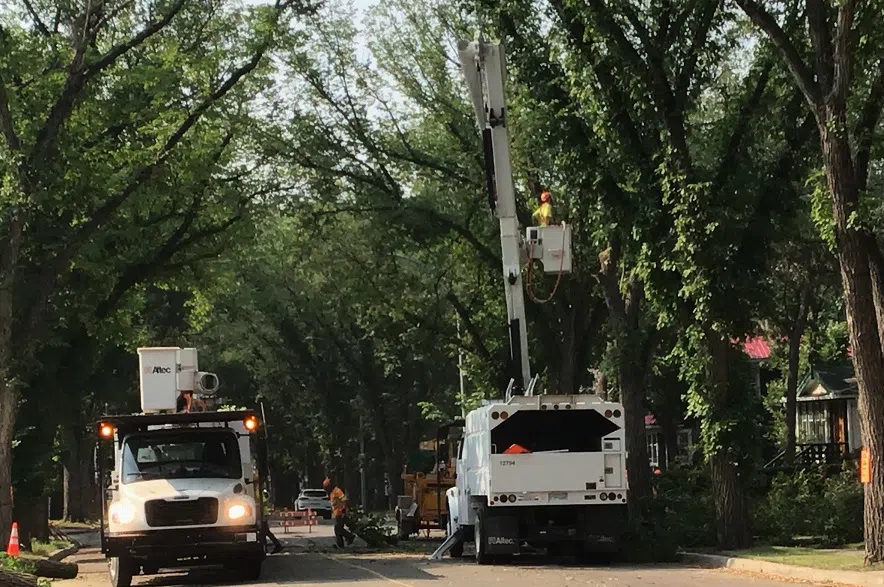It’s turning into the worst year ever for Dutch Elm Disease in Regina.
A record thirty-six trees have been confirmed by the city to have Dutch Elm Disease this year, and they expect to find even more as the summer goes on.
Crews have been hard at work removing infected trees and hoping to stop the spread.
A block of Elphinstone Street south of 14th Avenue was closed Wednesday as City of Regina Forestry Crews were on the scene removing seven infected elm trees. The trees impacted have been on the street since the 1920s.
“From my perspective, this is the worst year we’ve ever seen for Dutch Elm Disease in Regina,” said the city’s manager of Open Space Services Russell Eirich.
He notes Regina has had cases of Dutch Elm Disease since 1981, and was the first city in Saskatchewan to get it. Over the past 45 years, about 200 trees have been infected in Regina.
“So 36 trees, this season, is concerning from my perspective,” said Eirich.
The rest of Saskatchewan has been no stranger to Dutch Elm Disease either, with province-wide efforts to detect infected trees and prevent the disease from spreading.
While Saskatchewan has only been dealing with the disease for a shorter amount of time, Dutch Elm Disease has been around since the 1920s. It is spread by elm bark beetles that are the size of a pinhead, and they move between the trees and carry fungal spores that end up infecting the trees.
“The reason we are concerned about Dutch Elm Disease is this is a very virulent disease. It can take a healthy elm and kill it in as little as two weeks,” said Eirich.
The other reason they are concerned is because of the type of trees impacted. Regina has a large elm population. The city has about 500,000 trees and roughly one in three is an elm tree, which is a major reason why they are taking the disease seriously.
Normally, Eirich said, they try to get through every single tree four times a summer, and they had their crews out early this year.
What their crews look for are dead or dying leaves that are curling. They take a sample of the tree and pull back on the bark and look for staining inside. They then take the sample and have it tested over the period of seven to ten days and examine it.
Eirich said they try to get the trees out in 48 hours. “We found out Monday, we started getting organized, get the road closures in place, now we’re here getting the trees out.”
Eirich also explained why so many trees on that particular block of Elphinstone Street were impacted.
He said the trees there are tightly spaced, and said the disease can cycle down through the roots and cross over to another tree right beside it and pop back up. “That’s what we think is going on on this particular block.”
Eirich said once they are done removing the seven trees on Elphinstone Street, they plan to bring in a pest management crew to push fungicide into the healthy trees to try and stop the disease from spreading.
Unfortunately, Regina is only halfway through their Dutch Elm Disease season, so they still have a lot more trees to go through to find Dutch Elm Disease.
As for why this season has been so particularly bad, Eirich suspects the weather is a factor. There have been years of drought that have stressed the trees out, and while there has been more wet weather this year, the more recent hot weather may have made it easier to recognize trees that have been infected.
As well, there is a theory that the abnormally warm winter in the province was a factor. To kill off elm bark beetles, what is needed is a sustained period of -35 Celsius over a month.
“We just didn’t get that this year and we had a very mild winter, so we actually think the population of elm bark beetles hasn’t been impacted as dramatically.”
As for what residents can do, the city advises they can help prevent further spread by reporting suspected cases to Service Regina and avoiding bringing or storing elm wood in the city.











